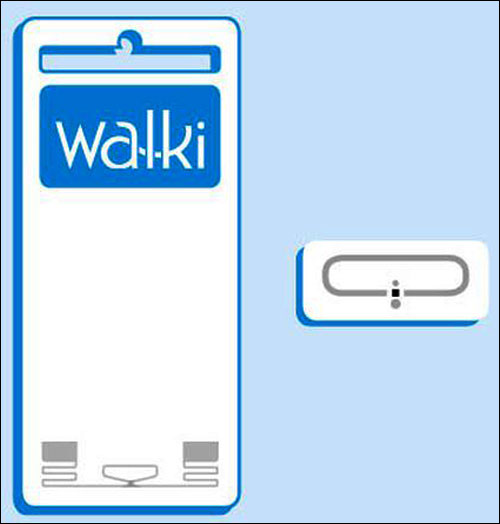Jul 31, 2013The uneven adoption of item-level radio frequency identification technology within the retail sector has led to a complex environment in which some goods, such as apparel, are tracked using RFID readers, while others are scanned via bar codes. For apparel manufacturers or brands, this means they must either create two different types of labels—one with built-in RFID tags, the other with only a printed bar code—or simply attach RFID tags to all products.
Finnish packaging materials company Walki Group is currently in discussions with several customers regarding the company's new external RFID tag antenna, known as the Pantenna Booster Antenna. The new antenna is designed to be built into labels or packaging, enabling companies, such as retailers or manufacturers, to print a uniform label for all customers with an ultrahigh-frequency (UHF) booster tag antenna built in, and to select which labels should be RFID-enabled, by adding a "kernel tag"—an EPC Gen 2 RFID chip bonded to a small antenna. The booster antenna was released in April 2013, says Sami Liponkoski, Walki Group's business line manager, and the company has since been discussing the solution with customers in the retail sector.
The solution is intended to save businesses the cost of printing RFID-enabled labels for use on products destined for retailers that will not be utilizing the RFID functionality. Walki would build the aluminum antenna directly into product packaging or a label for the customer, while its converter partners would glue on a kernel tag—a microchip and antenna—to create a fully functioning RFID label or inlay. The kernel tag would then couple with the booster antenna, via a contactless interface, in order to provide a read range similar to that of a standard UHF tag.
Alternatively, apparel manufacturers and other users could acquire a label-dispensing device that would apply a kernel tag to each label, prior to the label's encoding and printing.
Walki's first offering, released in 2012 under the brand name of Pantenna, was its lamination and laser-patterning system, known as 4E Technology, for creating antennas that replaced traditional etching—which, the company reports, offers greater flexibility in designs and faster production (see Walki Launches Service Using Lasers to Make Tag Antennas). The Pantenna booster antenna is an addition to this offering, and is made with Walki's same 4E laser-patterning process. As such, Liponkoski says, the booster antenna could be incorporated in some sort of inlay, such as plastic film, but it could also be built into cardboard, recyclable material or fabric.
The technology resulted from requests that Walki received from packaging materials customers seeking a solution to the high cost of applying RFID labels to products that may never require RFID reads. Many apparel companies are applying RFID-enabled tags to all of their products, whether or not the retailer that will receive them intends to interrogate the RFID tags or simply scan the printed bar code. In other situations, apparel manufacturers operate a separate assembly line specifically for attaching RFID tags only to products destined for RFID-enabled stores. However, Liponkoski says, many brands do not like to print separate types of labels for two different retailers, since the resulting labels lack uniformity for consumers shopping for their products. "They asked, 'Can we lower the total cost of a tagging solution?'" by offering an external booster antenna as an alternative to a full RFID tag, he says.
Walki's solution is its laser-patterned booster antenna, embedded into a label or packaging, that is typically priced at less than one U.S. cent apiece. The antenna would serve no purpose for products that do not require RFID technology, Liponkoski explains. Those that do, however, would also have a kernel tag positioned and then glued onto the booster antenna. While a standard antenna can be large and bulky, he notes, the booster antenna is sized at less than a half-inch. However, a kernel tag, when attached to the booster, can be interrogated at the same range as any standard EPC UHF tag: approximately 10 meters (32.8 feet). According to Liponkoski, inlay manufacturers could include the kernel tags among their offerings.
The solution would lower the per-unit cost of tagging items, Liponkoski says, since those without the chip would cost less than a cent each, while those with the kernel tag would be priced, on average, at slightly less than that of a standard UHF tag.
Other companies are already marketing booster antennas for item-level RFID tagging. However, Liponkoski contends, such booster antennas are typically printed with silver ink, and either provide lower performance (a shorter read range) than an aluminum antenna, or require multiple layers of ink in order to lengthen the read range, thereby making them more expensive than aluminum.
Liponkoski says his company does not yet have any customers that are using Walki's Pantenna laser-patterning service or booster antennas, though it has been conducting further development work, and is presently in discussions with customers about both. The firm will host a webinar on Sept. 25 to discuss the Pantenna booster antenna; those interested in participating can register at the Walki Group Web site.



